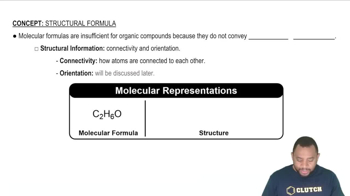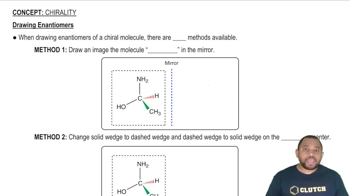Textbook Question
Propose structures and draw condensed formulas for molecules that meet the following descriptions.
(a) A ketone with the formula C5H10

 Verified step by step guidance
Verified step by step guidance



Propose structures and draw condensed formulas for molecules that meet the following descriptions.
(a) A ketone with the formula C5H10
Propose structures and draw condensed formulas for molecules that meet the following descriptions.
(b) An ester with the formula C6H12O2
Propose structures and draw condensed formulas for molecules that meet the following descriptions.
(c) A compound with formula C2H5NO2 that is both an amine and a carboxylic acid